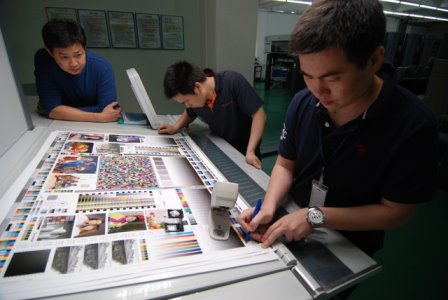Following is a comparison of Japan Color Standard vs. the recommended ISO L*a*b* values:
ISO
Japan Color
(btw...Japan Color Standard for black is 16.5 vs. ISO of 16.0)
Become a G7 Master Printer: Technology in the Service of Creativity

IIDEAlliance's G7 is a revolutionary new methodology for calibrating proof-to-press and press-to-press across any printing method. Developed by our industry's leading color experts, the G7 methodology includes revolutionary techniques for dramatically improving print quality and consistency. As G7 'Experts', we can provide step-by-step training within your company to calibrate proofing and printing systems using the latest G7 methodology. G7 methods have been adopted worldwide: files and proofs created anywhere in the world using the G7 methods, can be matched in any pressroom. For your business, this means improved color fidelity, press sheets that match the proof resulting in quicker make-readies, faster time-to-market, and lower manufacturing costs. Take the first simple steps toward better printing: contact us at Cathay America: jpasky@gmail.com




6 comments:
printing four color poster is a great artifact to create a long impression with your customers, this is an excellent choice. Thanks!
Hi, I think your color difference calculator used DeltaE2000 formula to calculat the color difference. ISO 12647-2 tolerances are based on DeltaE1976 formula. If you use 1976 formula to calculate the Delta E between ISO and Japan color, based on the values you have given in your post, the Delta E of yellow crosses 5
Dear Writer, I bookmark your Blog For Reading I really love your Blog Post Please Keep update Reguraly.
I m From Online printing company
Thanks for sharing about japan color std vs iso label !!
Very good calculation!!
I agreed,inks from Japan are different!! Printing Company Australia
Hi I am visit your blogs and see its. It is nice blogs. I am impressed from your blogs. Some Printing companies are printed quality products.
Good stuff! Keep up the work and I’ll keep coming back for more!
quick signs fort lauderdale
Post a Comment